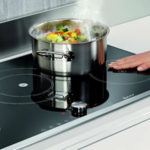If you are considering buying glass ceramics or an induction cooker, you should know that along with the purchase of a stove, you will need to replace all the old cooking utensils with new ones. Not everything is suitable for such plates! And in this article we will talk about which dishes can be used on a glass-ceramic panel, and which cannot be categorically.
What is the advantage of a glass ceramic stove over a conventional electric one?
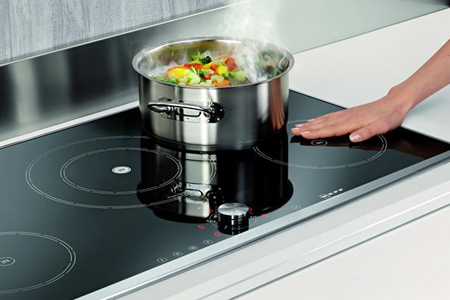
The advantages, of course, are many and very much.
- For example, the ability to instantly heat up and cool, thereby making cooking on it as comfortable as on gas.
- Moreover, food boils almost instantly and can be cooked twice as fast as on gas, and 4 times faster than on ordinary, electric.
- Also, one cannot fail to mention such a property as ease of washing. Those who had ordinary cast-iron “pancakes” know how difficult it is to wipe them. And the glass-ceramic panel is cleaned with a flick of the wrist, you just have to spray it with a special tool.
- Also, glass ceramics has a remarkable property to change the shape of the heating surface. It can be cooked not only in round pots, but also in ducklings!
- Some stoves can be programmed for a specific cooking mode, that is, you put a saucepan, it heats up to a certain point, boils as much as you need, and then reduces the heating power on its own.
- Well, the most important advantage is that it is much more economical in terms of energy consumption, compared to conventional.
But, in every spoon there is a fly in the ointment ...
![]() See also - 10 best glass-ceramic hobs
See also - 10 best glass-ceramic hobs
And what are the disadvantages and are they?
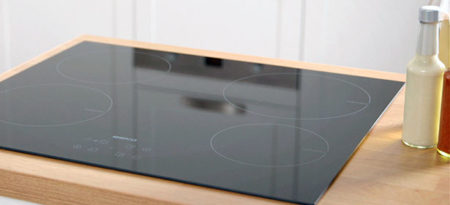
- These plates are made of expensive material - cerana, which has the strength to withstand the fall of a ten-liter pan, but ... Why are they afraid of point hits with sharp objects. Suppose, the most ordinary knife that fell from a height, with a blade down, can easily split the surface.
- In addition, a huge minus is that, among all models, there are practically no such models that would have little comfort. This means that you will never be able to put a cezve with coffee on the stove!
- Why? Because, the bottom of the dishes should be fully sized and overlap the edges of the heating surface in order to protect from moisture on the hot surface. If water gets on it, then you can say goodbye to the stove. It will burst either immediately or very soon.
- Also, a big inconvenience is that on its surface you can not put pots with a wet bottom. This is so inconvenient ... Imagine wiping it dry every time after filling the pan with water and it became wet.
- Cook on it carefully, without spilling anything to the surface. Sugar, for example, is afraid of it and may “order a long life” from its surface.
- If you break it, then you need to completely change the entire glass surface. And it is very expensive.
- And, of course, the disadvantages can be safely attributed to the fact that it is capricious in terms of dishes and not all types of pots can be used. Which dishes are suitable and which are not, you will learn from the next block.
Dishes that cannot be used on a glass-ceramic surface
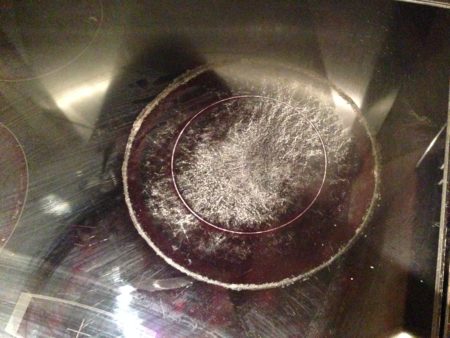
It is strictly forbidden to use copper and aluminum, from them stains remain on such a plate, which are very difficult to remove.
Glass-ceramic cookware is a bad option. Heat resisting, glass - it is also impossible to use. These three types of dishes do not warm up as quickly as necessary and as a result, the stove draws too much electricity. But here, in fairness, it should be noted that glass-ceramic dishes are not suitable for other cooking surfaces, it can only be used in the oven.
About Wok pan and about the round-bottom cauldrons, you can immediately forget. If the surface is small, then the dish will not even be able to burst properly. We need, exclusively, a dense coating on the bottom of the dishes of the entire cooking circle.
In no case should you use dishes with a deformed bottom. And the heating will be disgusting and the surface will be scratched.
That’s probably all. You can not use the above, and no matter how you like old pots, many will have to be abandoned. But what remains? Read on.
Which dishes to choose?
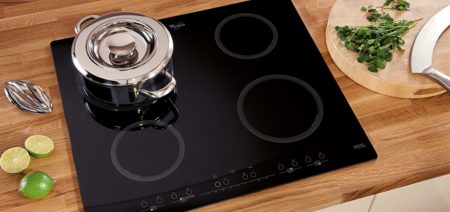
The most important rule:
The volume of the bottom of the dishes should completely cover the heating circle, and ideally, be a little more, but not less. This, as you recall, is so that the surface is protected from moisture.
Then, the dishes for glass-ceramic plates should be made of steel, cast iron or enameled metal. But, its bottom must be necessarily flat, even and smooth. The best option if it is heavy and thick.
In general, the best option for glass ceramics is considered to be stainless steel cookware. It is not as heavy as cast iron, which is extra insurance in case of a fall, and it has good thermal conductivity.
Yes, and to wash such pots is easy, but the glass-ceramic hob has nothing to do with it, of course.
![]() See also - What is the optimal power of an induction hob?
See also - What is the optimal power of an induction hob?
Recommendations for choosing cookware for induction cookers
Induction cookers, this is a true innovation in the world of kitchen appliances. They are very expensive and not everyone can afford such a house. While they are more often used in restaurants and other catering cuisines.
It works in an amazing way: the surface remains cold, and the bottom of the pan heats up to the set temperature. And due to this, in operation it is simpler and less capricious than glass ceramics.
Dishes for such plates are suitable only with a magnetic bottom. This is not something new, no. This is any dish that is made of metal that adheres to a magnet. That is, she does not accept any alloys, copper and other things.
We told you which dishes can be used on a glass-ceramic surface. Now it’s up to you to decide whether to take such a stove or wait.
![]() See also - Is induction cooker harmful to human health
See also - Is induction cooker harmful to human health

